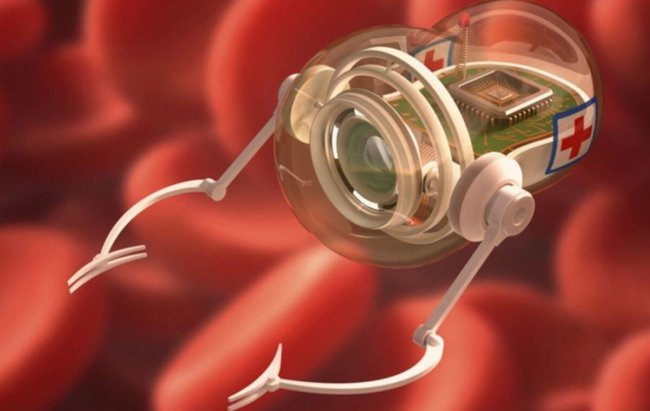This week’s lecture and readings showed us the potential that nanotechnology has and its rapid development that is constantly pushing the boundaries of technological development in our society. As well as the economic and scientific impact it could make, nanotech also has a significant potential in the world of art. This unique form of technology has influence everywhere in the fields of art and science.
 |
| Comparison scale for nanotech |
Nanoparticles are one of the more popular areas of nanotechnology. They are used and developed in commercial business as well as in the medical field. They are able to change physical properties of objects such as it being flammable to non-flammable, turning liquids to solids, and can create self-cleaning/repairing devices. They are found in some of the most common, everyday items these days, which goes by unnoticed. In terms of medicine, nanotech devices able to more accurately select what area of the body absorbs the medicine in order to better treat the problem. They could possible reduce the use of chemical treatments of skin and cosmetics. Also, if they can more accurately attack an area, then it is possible in the future that nanotech devices can reduce the use of chemotherapy which causes damage to the entire body rather than just the small area needed.
 |
| Concept nanodevice for use in medical industry |
In the form of art, nanotechnology is introducing possibilities that were not fathomable before. In a project called "Transjuicer", artist Boo Chapple was able to study the make-up of bones and transform them into an audio speaker. He learned that using a specialized voltage, the piezolectric material (bones) will oscillate and that makes an audible sound. This is a perfect example of how nanotechnology opened up a whole new world to art that was not previously possible.

References:
1. “When Nanotechnology Meets Art”. Science and Religion.com. n.p., 20 Apr 2011. Web
2. Ostman, Charles. “Aesthetic Exploration in the ‘Virtual Nature’ of Synthetic Environments and Artificial Ecologies”. Nanotechnology Now. n.p., n.d. Web
3. “Introduction to Nanotechnology.” Introduction to Nanotechnology RSS. N.p., n.d. Web.
4. “Visceral: Interview with Boo Chapple.” Sciencegallery.com. N.p., n.d. Web.
5. Gimzewski, Jim, and Victoria Vesna. The Nanomeme Syndrome: Blurring of Fact & Fiction in the Construction of a New Science. N.p., n.d. Web.




Hey Sean, I thought the "Transjuicer" project was fascinating! Piezoelectric materials are a significant area of study within electrical engineering, and I never actually knew that bones themselves exhibited piezoelectric properties, so it's fascinating to see how we can apply a voltage to them to generate precisely controlled physical vibrations producing sound. Great example of how nanotech enabled us to study the properties of a material to exploit its previously unknown properties.
ReplyDelete